Bidens frondosa
Bidens frondosa devil's beggarticks
The beggarticks or sticktights are a weedy group of plants in the aster family that lack ray florets (pseudo petals) and have only a cluster of tubular disk florets. Because of this the flowers tend to be inconspicuous. The group is also known for their barbed achene seed-like fruits that stick to animal fur or clothing.There are several species of beggarticks in our area that differ sometimes only in technical details. The various species are also known by the common names devil's-pitchfork, devil's bootjack, sticktights, bur marigold, pitchfork weed, and tickseed sunflower. The common or devil’s beggartick is one of the more common in Western Pennsylvania.
The main distinguishing characteristic is that the leaves are divided into 3 to 5 lance-shaped, toothed divisions. The leaves have slender petioles. The leafy, toothed bracts that support the flower head extend well beyond the small yellow central disk. The flower heads grow up to one inch in diameter and have no scent. This species has achene fruits that are armed with 2 barbed awns. The square stem is usually tinged with magenta or purple, especially in the leaf axils.
The plant grows 1-4 feet tall in damp areas, fields and waste places. It is found throughout eastern and central North America and blooms from August to October. This species has been introduced to many other parts of the world. The related European beggar-tick (B. tripartita) has thin leaves divided into 3 parts and has blackish sepal-like bracts. The swamp beggartick (B. connata) has undivided leaves with long stalks and a smooth almost continuously reddish or purple stem. The leafy-brached beggar-tick (B. comosa) has leaves that taper to winged-margined stalks.
Habitat & Range
Common in fields, along roadsides, and on moist open ground.
Present throughout the state.
| EMP: | FACW |
|---|---|
| NCNE: | FACW |
Phenology
Flowers August to October.
Plant Codes
S-rank: S5 (Secure)
G-rank: G5 (Secure)
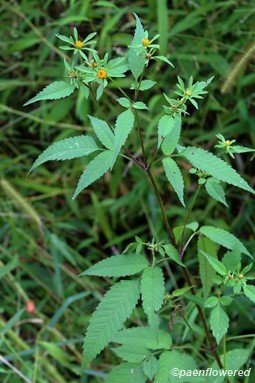
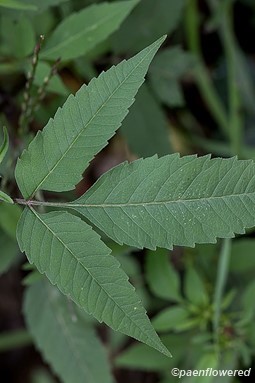
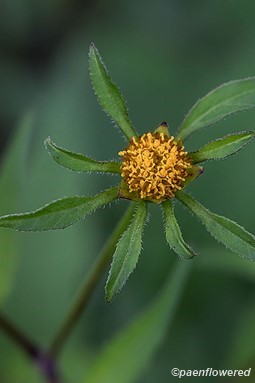
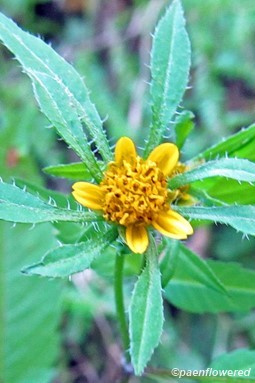
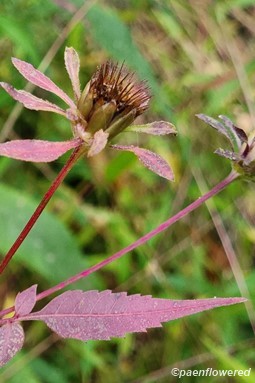
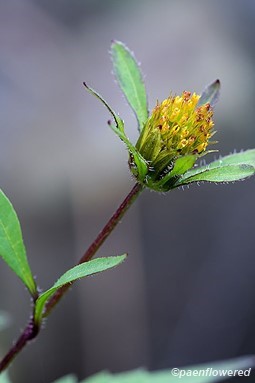






Comments
Have you spotted this plant in your area? We'd love to hear about your experience! Share your comments or questions about the plant below. Comments are moderated before posting.